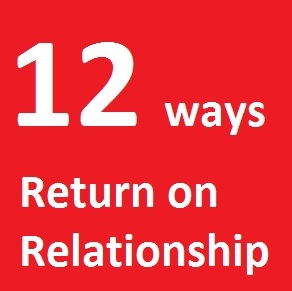Social media’s incredible power is in allowing us to instantaneously connect to, interact with, and build relationships with our audience of thousands… and it’s exactly that power that makes it risky to turn your social media campaigns over to an outside agency.
The “social” part of social media campaigns makes them quite different than traditional ad campaigns. Instead of a brand presence relying on catching attention through the initial “look and feel” (of a website, brochure, television ad, etc.), it now includes a broader and deeper ongoing connection based on personality and relationship, both of which are tough to have someone “outside” successfully convey for your brand.
Also unlike traditional ad campaigns and their weeks/months-to-market brochures and television ads, social media has the power of immediacy with seconds/minutes-to-market Tweets, Facebook postings, YouTube video clips, etc. In other words, with social media we do not have the luxury of time for multiple review cycles and sharp perfection of every public brand message.
However…
I’m not suggesting that you should never consider using outside resources for your social media campaign. If you are still trying to figure out how your brand can use social media for relationship commerce, or you simply have run out of hours in your day to use social media effectively, you may need an outside agency’s help. Just be very careful with your hiring, and deliberate with your integration of outside resources.
Specifically, you need to make absolutely certain that:
1. The key players of your outside agency team are attached at the hip to senior management. When your brand shifts in any way, your social media messages need to immediately reflect those shifts. If your brand’s social media presence isn’t nimble, trust and therefore relationships and influence will falter.
2. Someone with a direct line to the c-suite (top management) and a clear understanding of the brand voice and long-term objectives is keeping track of, managing, and observing the process daily. The brand voice, or “personality” is the heart of your social media campaign, so someone needs to make sure the personality stays true to the c-suite message and consistent throughout the campaign.
3. If you don’t have someone on staff to oversee the social media strategy, you hire a consultant for this role. This consultant must have the requisite experience with social media, and take personal charge of the strategy. Again, you can’t afford the time for information to trickle down from senior management, so the consultant must have access to communicate directly with senior management and be someone who really “gets” how social marketing works and how to execute.
Bottom line: Who can you trust with your brand’s relationships? Make that decision wisely.
Ted Rubin
 If you want to continue to reach your market in this social media age, the marketing focus needs to be on building relationships, and metrics need to expand beyond ROI (Return on Investment) to include ROR: Return on Relationship. So how do you build and strengthen relationships with your audience (as a whole, and as individuals) to increase your ROR? Here are 12 ways to do so:
If you want to continue to reach your market in this social media age, the marketing focus needs to be on building relationships, and metrics need to expand beyond ROI (Return on Investment) to include ROR: Return on Relationship. So how do you build and strengthen relationships with your audience (as a whole, and as individuals) to increase your ROR? Here are 12 ways to do so:
 Groupon is getting way ahead of themselves and I think their rejection of Google’s bid is a Big mistake. My 2011 prediction… Google buys Twitter!
Groupon is getting way ahead of themselves and I think their rejection of Google’s bid is a Big mistake. My 2011 prediction… Google buys Twitter! What does experiential marketing entail? It entails allowing a customer/prospect to engage & interact with a brand, product, and service in sensory ways that provides an additional intimate level of experience and information.
What does experiential marketing entail? It entails allowing a customer/prospect to engage & interact with a brand, product, and service in sensory ways that provides an additional intimate level of experience and information. We’re hearing more and more about “Relationship Commerce” these days – but how many of us actually understand its implications? I’ve spent years in the midst of the evolution of commerce: As traditional commerce shifted into a digital world, through it’s evolution into Social Commerce, and now as we come upon the brass ring – Relationship Commerce.
We’re hearing more and more about “Relationship Commerce” these days – but how many of us actually understand its implications? I’ve spent years in the midst of the evolution of commerce: As traditional commerce shifted into a digital world, through it’s evolution into Social Commerce, and now as we come upon the brass ring – Relationship Commerce.